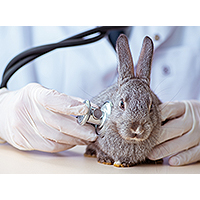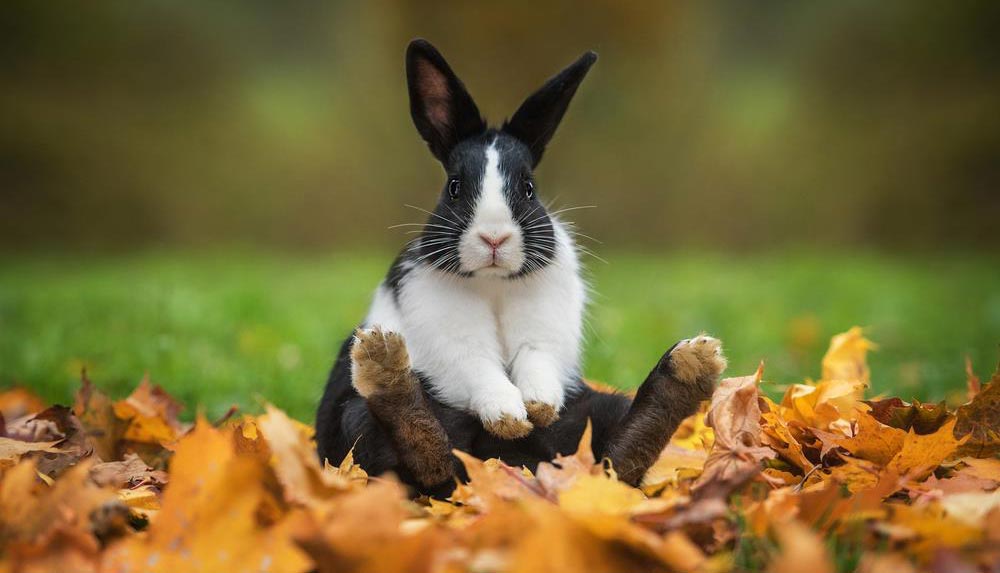Caring for Your Pet Rabbit
Author: Pet Station Date Posted: 17 March 2021


Rabbits are unique pets, and they require specific needs to live long happy, and healthy lives. If you think of getting one for your home, make sure that you are ready for the commitment it requires and ensures you’re armed with the right knowledge to care for your future pet. This guide will help you to understand the basics of caring for a rabbit and assist you in deciding if a rabbit is the right pet for you.
Rabbit Care Guide New Owners
Step 1: Set up indoor housing
You have several options to house your rabbit: inside a bunny proofed room, contained in a puppy pen, bunny condo, or a large rabbit cage. If you are containing your rabbit in an enclosed cage, make sure that they have enough room to hop around, and also ensure they’re out of their pen for at least a few hours a day for exercise.
Step 2: Bunny proof your home
Rabbits require enough space to run around and explore. To ensure that you have a safe place for your bunny and to protect your belongings, you will need to bunny proof your home. This requires you to cover all wires with plastic sleeves or flex tubing, or putting them 3-4 feet out of reach of your rabbit. Make sure that all items that your rabbit can gnaw are protected. Remember, rabbits will chew everything in reach.
Step 3: Give your rabbit fresh hay, fresh greens, fibre-rich pellets, and water
A rabbit’s diet should mainly consist of hay. This is why you need to provide your rabbit with fresh hay at all times. For baby rabbits, you should give them alfalfa, and adult rabbits must be fed with either timothy hay, grass hay, or oat hay. Apart from providing your rabbit with fresh hay, you should also give them some veggies, fibre-rich pellets and freshwater daily. Fresh Water can be supplied with a pet feeder that can be hanged
Step 4: Prepare a litter box
Rabbits are one of the animals that have a natural inclination to poop and pee in one place. You can take advantage of this characteristic by preparing a medium-sized cat litter box or shallow storage bin near their food and water area. When setting up the litter box, put a thin layer of rabbit-safe, recycled newspaper pellet litter in the litter box. Remember, DO NOT use clay/clumping cat litter or wood shavings, as they are not safe for your pet rabbit. Next, put hay on top of the litter. This is because rabbits enjoy eating and pooping at the same time, encouraging good litter box habits.
Step 5: Provide enrichment and stimulation
Rabbits are easily bored, that’s why you will need to provide them with enrichment and stimulation. Apart from giving them space to exercise, you should also give them some mental exercise. One way to do this is by building your rabbit a cardboard castle. Cardboard castles are a great way to provide stimulation because rabbits spend hours chewing new windows and doorways. They can also give your rabbit a quiet refuge when necessary. Apart from that, you can provide a variety of toys for your pet rabbit to pique its interest.
Step 6: Regularly groom your rabbit
Although rabbits can naturally groom and clean themselves, you still need to groom your rabbit on a regular basis. Rabbits go through shedding cycles throughout the year; which is why it is essential to brush them to remove excess fur. If you don’t do this, your rabbit may accidentally ingest the fur which can cause serious digestive issues. Clipping their nails regularly is also essential as unclipped nails can get stuck on things such as fabrics or the unclipped nail can also begin to curl resulting in the nail going into your rabbit’s claw.
Step 7: Bring your rabbit to the vet
Since rabbits are prey animals, their natural instinct is to hide any symptoms of illness. Keep an eye on your rabbit and make sure that it is drinking, eating, pooping and peeing regularly. If there are any changes in their behaviour, be sure to contact your vet immediately. Apart from responding to symptoms of illness, you should bring your rabbit to the vet for regular checkups. The vet can check their ears, eyes, teeth, and gut to ensure that your pet is healthy. Lastly, consider spaying or neutering your pet rabbit. By spaying or neutering them, you can reduce their aggressive behaviour, improve litter box habits, and most of all, improve overall health.
Step 8: Understand their language and behaviour
Rabbits are unique, and they are different from common household pets such as dogs and cats. Rabbit owners must understand how rabbits think and behave so they will live happily together with their pets. If you are new to owning a rabbit, try reading various books such as Binkies, Nose Bonks and Flops: Rabbit Behavior Explained and Help! My Rabbit Hates Me!. By understanding their natural inclinations, you can build a trusting and loving relationship with your beloved bunny.
Step 9: Train them
One unique characteristic of these small pets is that they are quite trainable. You can litter train rabbits and redirect their natural behaviours such as chewing and digging. Of course, it may take some patience, but once you spend time and learn their behaviour and language, you can quickly train them, resulting in a better relationship.
Pet Station
Here at Pet Station, we understand that you always want what is best for your animals. If you are looking for the best food, vitamins, and supplements for your rabbit in Australia, we’ve got you covered. Feel free to browse all our rabbit food, healthcare, and supplies, and if you have any questions about our range of products, get in touch with our friendly and experienced team members who are happy to go above and beyond for you and your furry friends.





